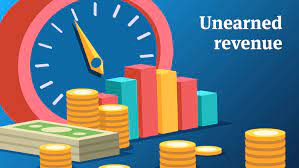What percentage of your earnings are taxed? Many individuals are unaware—or would prefer not to think about it. While you may be aware of how much is withheld from your paycheck each pay period, you may be unaware of your tax rate, which is the average proportion of your income that you pay to the federal government. To learn more about effective tax rates and how to find yours, read on. We have covered what an effective tax rate means for corporations, its formula, how to calculate using a calculator, and a good comparison between the effective tax rate vs marginal tax rate.
What Is the Effective Tax Rate?
The effective tax rate is calculated by dividing a taxpayer’s total tax liability by their taxable income. In the United States, tax rate brackets are claimed to be more beneficial for 95% of persons since they account for the taxpayers’ final dollar of income.
On the contrary, persons in high tax brackets may find the marginal tax rate more feasible.
It is critical to grasp the concept of an tax rate since it is one metric that investors can use to predict corporate profitability. However, because taxable income falls into multiple tax slabs in a progressive tax scheme, the rate might fluctuate drastically year after year. Otherwise, it is impossible to determine the reason for a rapid increase or decrease in the tax rate.
For example, a shift in the tax rate could be the result of asset accounting manipulation by firms to decrease their tax burden. Nonetheless, the tax rate is a good predictor of the government’s tax burden.
How the Effective Tax Rate Works
The tax rate, as previously stated, is the average tax rate of a taxpaying entity. This includes both individual and corporate taxpayers. The tax rate is given in percentage form.
The tax rate normally relates primarily to federal income taxes and excludes any other types of taxes, such as:
- State and local income taxes
- Sales taxes
- Property taxes
- Other types of taxes an individual might pay
Individuals can calculate their overall tax rate by adding their total tax burden and dividing it by their taxable income. This computation can be useful when comparing the effective tax rates of two or more individuals, or when determining what a specific individual might pay in taxes if they lived in a high-tax vs. a low-tax state—a factor for many people considering migrating in retirement.
The Formula for Effective Tax Rate
A simple formula can be used to compute an individual’s effective tax rate. The formula for calculating tax liability and determining an effective tax rate for corporations or a person is detailed below.
For corporations, the effective tax rate is calculated by dividing the tax bill by the company’s earnings before taxes. Individuals’ tax rate is calculated by dividing their tax expenses by their taxable income.
Individuals in the United States can find their “Total Tax” and “Taxable Income” on Form 1040. The form computes an individual’s total taxable income and estimates how much tax must be paid or reimbursed by the government. It is used to file individual federal income tax returns.
- Effective Tax Rate Formula For Individuals:
Effective Tax Rate Formula Individual = Total Tax expense / Taxable Income
- Effective Tax Rate Formula For Corporations:
Effective Tax Rate Formula Corporation = Total Tax Expense / EBT
Since EBT is effectively net income plus total tax expense and as such, the above formula can be modified as,
Effective Tax rate Corporations = Total tax expense / (Net income + Total tax expense)
How Do I Calculate My Effective Tax Rate?
Through the step-by-step explanation below, we will learn how individuals and corporations with effective tax rates compute their yearly tax burden, which reflects their cash flow and tax planning:
- To begin, take the whole expense of the individual from the income tax file that was submitted.
- Next, Determine the individual’s taxable income next. It is calculated by deducting total exemptions and deductions from an individual’s total gross income. Specifically, taxable income equals gross total income minus total exemptions minus total deductions.
- Finally, as indicated above, compute the individual’s tax rate by dividing total tax expense by taxable income.
The following procedures can be used to derive the corporate formula:
- Step 1: First, determine the corporation’s total expense, which will be immediately accessible as a line item directly above the net revenue on its income statement.
- Step 2: Next, calculate the corporation’s net income, which will appear as a line item on the income statement. By adding the entire tax expense to the net income, the EBT can be determined. EBT = Net income minus Total Tax Expense
- Step 3: Finally, the tax rate of the corporation is derived by dividing its total tax expense by its EBT, as indicated above.
Tax rate Corporation = Total tax expense / (Net income + Total tax expense)
What Is an Example of an Effective Tax Rate?
Consider the following example:
Individual A declares a taxable income of $450,000, while Individual X declares a taxable income of $380,000.
Individuals reside in a country with a tax system in which:
- Income under $100,000 is taxed at 12%;
- Income between $100,00 and $350,000 is taxed at 18%; and
- Income over $ 350,000 is taxed at 28%.
Despite reporting different taxable incomes, both persons fall into the 28% rate based on the information supplied. It implies they’d both have to pay the 12% tax on the first $100,000 of income, which comes to $12,000. Furthermore, they would each be liable to pay 18% on the difference between $100,000 and $350,000 (a $250,000 difference), which is calculated as 18% multiplied by $250,000, or $45,000.
They are each liable for 28% of their respective profits above the $350,000 level. Individual A has a taxable income of $450,000, thus the 28% tax would be $28,000. Individual X with a taxable income of $380,00 would pay $8,400 in tax under this bracket.
As a result, Individual A’s tax due is $85,000, while Individual X’s tax obligation is $65,400. Individual A’s tax rate would be 18.8%, whereas Individual X’s tax rate would be 17.2%. Despite the fact that both individuals are in the 28% tax bracket, their effective tax rates differ.
Marginal Tax Rate
In a system that applies tax burdens to people based on their respective actual taxable incomes, the marginal tax rate is the maximum percentage of income tax that anyone is required to pay.
Effective Tax Rate vs. Marginal Tax Rate
The marginal tax rate vs the effective tax rate are linked but not the same. The effective tax rate, which is often lower, is a more truthful portrayal of a person’s or corporation’s overall tax liability vs their marginal tax rate. Keep in mind that the marginal tax rate refers to the highest tax bracket into which their income falls.
The marginal tax rate is the tax rate determined by your income tax band. The marginal tax rates for 2023 range from 10% for the lowest tax bracket to 37% for the highest tax group.
However, this rate may not apply to all of your earnings. Parts of your income will be taxed at the applicable tax rate. As a result, you’ll pay the lowest tax rate for the first dollar you earn—10% for single filers and $20,550 for married joint filers. Each dollar after that is taxed at the rate applicable to that bracket, up to your final dollar in the highest bracket.
The tax rate of a taxpayer is frequently lower than the marginal tax rate. In other words, someone in the 24% tax rate does not normally pay the IRS 24% of their annual income. Instead, their tax rate maybe 18%, implying that they are paying the federal government 18% of their taxable income.
Marginal Tax Rates for 2023
The IRS modifies the marginal tax rates to account for inflation each year. Based on their income, a person’s marginal tax rate falls into one of seven brackets.
The table below displays the marginal tax rates for single taxpayers and married taxpayers filing jointly in 2023.
| Marginal tax rate | Total income for single filers | Total income for married couples filing jointly |
| 10% | $10,275 or less | $20,550 or less |
| 12% | $10,276 to $41,775 | $20,551 to $83,550 |
| 22% | $41,776 to $89,075 | $83,551 to $178,150 |
| 24% | $89,076 to $170,050 | $178,151 to $340,100 |
| 32% | $170,051 to $215,950 | $340,101 to $431,900 |
| 35% | $215,951 to $539,900 | $431,901 to $647,850 |
| 37% | $539,901 or higher | $647,851 or higher |
What’s the Difference Between the Effective and Marginal Tax Rates?
The average tax rate for an individual or business taxpayer is known as the effective tax rate. As such, it is the tax burden as a percentage of the taxpayer’s annual income. A marginal tax rate, on the other hand, is the entire amount of tax levied on various income levels. This indicates that if a taxpayer’s income increases, so does their tax rate. Under marginal tax systems, taxpayers are classified into tax brackets, with the first level of income paid at a lower rate. Any additional income is taxed at a higher rate.
Which Is Lower: the Effective Tax Rate or the Marginal Tax Rate?
The effective tax rate of an individual is lower than the marginal rate. This is due to the marginal tax rate, which divides your income into several tiers. The first level of income is taxed at a reduced rate, whereas higher levels are taxed at the highest rate. Any sums in between are taxed based on the levels in between.
What Is the Difference Between Tax Rate and Effective Tax Rate?
The statutory tax rate is the legal rate levied on taxable income that falls inside a specific tax category. The effective tax rate is the percentage of income actually paid by an individual or a business after tax benefits (such as loopholes, deductions, exemptions, credits, and preferential rates) are taken into account.
What Is My Effective Tax Rate 2023?
Using a calculator, divide the entire amount of tax paid by your taxable income to calculate your effective tax rate.
What Is the Advantage of Effective Tax Rate?
The effective tax rate, which is often lower, is a more realistic portrayal of a person’s or corporation’s overall tax liability than the marginal tax rate.
Why Is My Effective Tax Rate Lower Than My Tax Bracket?
So you move through each tax bracket, paying the percentage on the amount of income that fits within that tax bracket until you reach the bracket for which your entire taxable income falls. This technique allows your effective tax rate to be much lower than your marginal tax rate.
What Is the Most Common Effective Tax Rate?
According to the OECD, the average single worker in the United States will face a “tax wedge” of 28.4% in 2021.
The Bottom Line
Your effective tax rate is the percentage of your taxable income that you owe in taxes. This is based on IRS brackets that are set and maintained. Divide the total tax by your taxable income from Form 1040 to calculate your tax rate. The effective tax rate for corporations is computed by dividing the total tax by earnings before interest. If you have any questions about your taxes, consult a tax counselor or specialist who can assist you in the proper route.
Related Articles
- Total Cost Formula: Ultimate Guide on How to Calculate the Total & Average Loan Cost
- WHAT IS EFFECTIVE TAX RATE: How It Works & How It’s Calculated
- OREGON INCOME TAX: All You Should Know
- FEDERAL INCOME TAX: How is Federal income tax Calculated?
- Marginal Cost: Meaning, Formulas & How to Calculate, Simplified!!!






